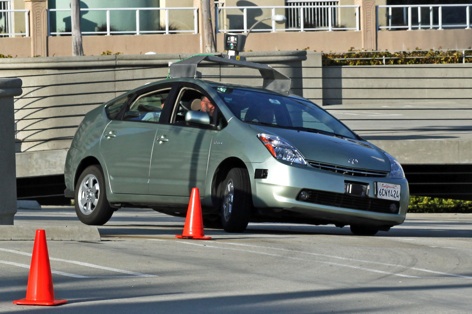As I have mentioned in my previous blogs, more ‘joined-up’ thinking is required from a number of different parties before the widespread implementation of driverless vehicles on our roads can become a reality. Like with all other new and radical transport technologies, a large amount of development time, safety assessment criteria and gradual introduction of technology will be required before we see driverless taxis, for example, appearing in our megacities.
Nevertheless the fast paced mobility requirements of megacities coupled with opportunities to incorporate the sensor, communication and re-charging technologies in to their evolving infrastructures and their rapidly developing mobility services eco-systems make these areas likely to benefit from the early implementation of driverless taxis in some form or another.
The success of Google’s driverless car driving on US public highways and the media attention it has generated shows just how far engineers have come with this technology and has put the concept of driverless vehicles firmly in the minds of government agencies around the globe. The signing of a driverless car bill in September 2012 by California’s State Governor Jerry Brown is proving to be the latest big step towards the introduction of driverless vehicles on our roads.

Active safety systems which feature growing elements of driverless technology (for example Automatic Emergency Braking) are starting to appear on today’s production vehicles. The further development of these systems is providing important stepping stones to driverless cars. A notable current development Ford is working on is “traffic jam assist”. This system is being designed to enable their cars to drive autonomously in stop start situations on motorways. Of particular note is their vision for this system - that you would be free to “read a newspaper, check your phone or sip on your morning coffee”. This would certainly be a big step in implementing this technology in a highly visible way to consumers and the likelihood is that many could grow to accept ceding temporary control of the car.
The big challenge that we as automotive engineers face is how to ensure that these highly complex safety critical systems (and system-of-systems) are sufficiently reliable and safe to give the public confidence and help accelerate market introduction of the technology. Historically development in the automotive industry has tended to be based on the assumption that failures can usually be controlled by the driver bringing the vehicle to a stop. This assumption is becoming less and less valid as we introduce these “driverless” technologies which rely on electronics and software and so new approaches to designing, developing and testing these kinds of systems on vehicles are now starting to be introduced in the automotive industry.
Engineers in other industries, for example aerospace and nuclear, have faced this issue for a long time as they have had to design and develop systems where failures can lead directly to dangerous situations. Although there is plenty to learn from these industries, the automotive industry differs significantly in that the car is a mass market consumer product in a highly competitive global market where reducing cost and new product development life-cycles are key features. For this reason a new standard for road vehicle functional safety (ISO 26262) has been developed and recently introduced in the automotive industry with organisations such as my own now seeing a rapid growth in demand from our customers for assistance in applying it.
Furthermore, because of the complexity of all the traffic scenarios that active safety systems must be able to operate in, exacting ‘real world’ testing methods also have to be developed in order to fine-tune the algorithms that use data from a variety of sensors to control the vehicle (e.g. pedestrian detection algorithms). Once these are fine-tuned, the whole system then needs to be subject to real world testing, which presents engineers with the dilemma of how to fully test such systems in the types of real world scenarios where there are pedestrians of all shapes and sizes, other moving vehicles and other traffic situations in such a way that the testing is both safe and representative of the real world.
Engineers are responding to this need by developing specialist active safety test facilities. These facilities feature test equipment such as robot pedestrians, target vehicles and network assisted reference vehicles to execute scenarios precisely and ground truth to measure where test vehicles and robot pedestrians are in real time. In fact, the future development of these testing technologies is currently a key driver of my own company’s research strategy.
Looking ahead, it is not just the safety of a vehicle-only system that engineers will be concerned with but with the safety, security and reliability of the extended infrastructure-vehicle system as well. The development of resilience in these key system-of-systems areas will be a key enabler of co-operative driverless vehicles and in the end could prove to be a limiting factor in just how much of a shift society makes to driverless cars on our roads. Another challenge for engineers!











Simulations show Optimal Design for Bladeless Wind Turbines
"an 80cm mast" Really? I'm short but that's only half my height! Do they mean 800cm?